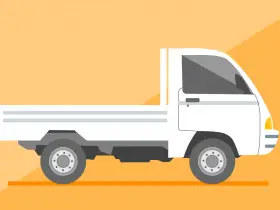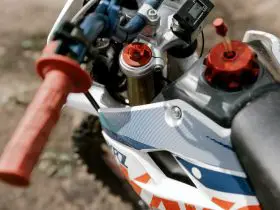Running a small business is not cheap, and the cost of necessary equipment is often what drives small businesses to fail. Luckily, many pieces of business and farm equipment can be written off when filing taxes. Writing off equipment can help offset the cost of starting a small business. When farming, equipment such as UTVs and side-by-sides are necessary and therefore applicable for a particular fileable tax write-off. Continue reading to learn more about a UTV tax write-off and how to file one. Keep in mind that we are neither financial nor tax advisors.
Table of Contents
What Is a UTV Tax Write-Off?
A tax write-off is a vital part of the tax return process for many businesses. Essentially a write-off is any business expense that is deemed legitimate and is, therefore, able to be deducted from the taxable income on your tax return.
By filing a tax write-off, you may end up in a lower tax bracket and won’t have to pay as much money in taxes to the government. Corporations, small businesses, individuals, and self-employed people can write-off expenses.
While the IRS determines what expenses are considered legitimate write-offs, some everyday expenses are deductible. These include, but are not limited to, the business use of a car, donations to charities, and tools used to manage your business, although these usually fall under specific rules.
Write-Off Options For Business Equipment
To qualify for a UTV or side-by-side tax write-off, you must determine the correct tax code to file it under. While most of these are offered across the board in the U.S., each state has a different way to file taxes. Therefore, understanding taxes is a crucial step to save money on your UTV or side-by-side.
Section 179
No matter the specific process you follow, you’ll likely end up writing off your UTV under Section 179 of the IRS tax code. This section lets business owners deduct the purchase price of equipment or software they acquired during the past tax year.
This means that if you buy or lease a piece of qualifying equipment, such as UTVs, then you can deduct the total price of it from your gross income while filing for taxes. This was created to encourage small businesses to purchase equipment essential for the growth of their business.
There are a lot of things that qualify for Section 179. For example, most business tools qualify, such as farm equipment like side-by-sides and UTVs. All applicable equipment can also be either new or used, as long as it is considered new to you within the tax year.
For purchased equipment to qualify for Section 179, it must be used for business purposes more than 50% of the time. To find out if your equipment reaches the qualification, simply multiply the cost of the equipment by the percentage of business use.
While this seems helpful, there are still limitations.
First, depending on the tax year, there is a monetary limit. For example, in 2019, the limit was $1 million per item and $2,500 million overall. After reaching the overall limit, the deduction begins to phase out on a dollar-per-dollar basis, with it going away entirely after $3,500 million.
Bonus Depreciation
During some years, there is a tax code fileable under bonus depreciation. Currently, it is offered at 100% until 2023, going down in percentage every year, with it being offered at only 20% in 2026.
Similar to section 179, qualifying equipment must be used for more than 50% of business use. It also only recently began to apply to used gear, as well as new items.
Bonus depreciation is more helpful to larger companies and corporations, as they often go over the max limit for section 179. There is no dollar limit for bonus depreciation, and it can be applied along with section 179 if needed.
Regular Depreciation
This is an annual allowance that spreads the deductions for equipment cost over a certain number of years determined by law for the type of item. You can find rules for regular depreciation in IRS Publication 946.
De Minimis Rule
Instead of adding the cost of equipment to your balance sheet, you can choose to consider equipment as non-incidental materials and supplies. These are items you keep track of but are still able to deduct in full upfront.
For small businesses, the de minimis rule limits you to deduct up to $2,500 per item. A higher limit applies to larger corporations with audited financial statements or certain government filings.
To use the de minimis rule, you must attach a statement to your tax return that clearly states you’re using the rule.
Limitations and State Tax Traps
Each write-off option has its limitations. These are usually monetary and apply on a federal level, but some income tax rules depend on the state level.
States such as California and New Jersey have their own rules for tax write-offs for businesses. To avoid error, make sure to examine to what extent section 179 or bonus depreciation is claimable based on your state’s rules.
Section 179 can also change each year without notice, sometimes even changing mid-year. Because of this, it’s best to keep up to date with changes to the deduction.
Save Money Filing a Tax Write-Off
Utilizing tax write-offs is an option available to everyone, but it is especially beneficial for small businesses. For example, they can be helpful for small-scale farms purchasing equipment such as side-by-sides or UTVs.
Because these tools can be crucial to further your business, it’s essential to save money when you can. Overall, it’s easy and quick to save money by filing a UTV tax write-off.
Are you looking for more posts about UTVs and side-by-sides? Check out some of our other articles.










